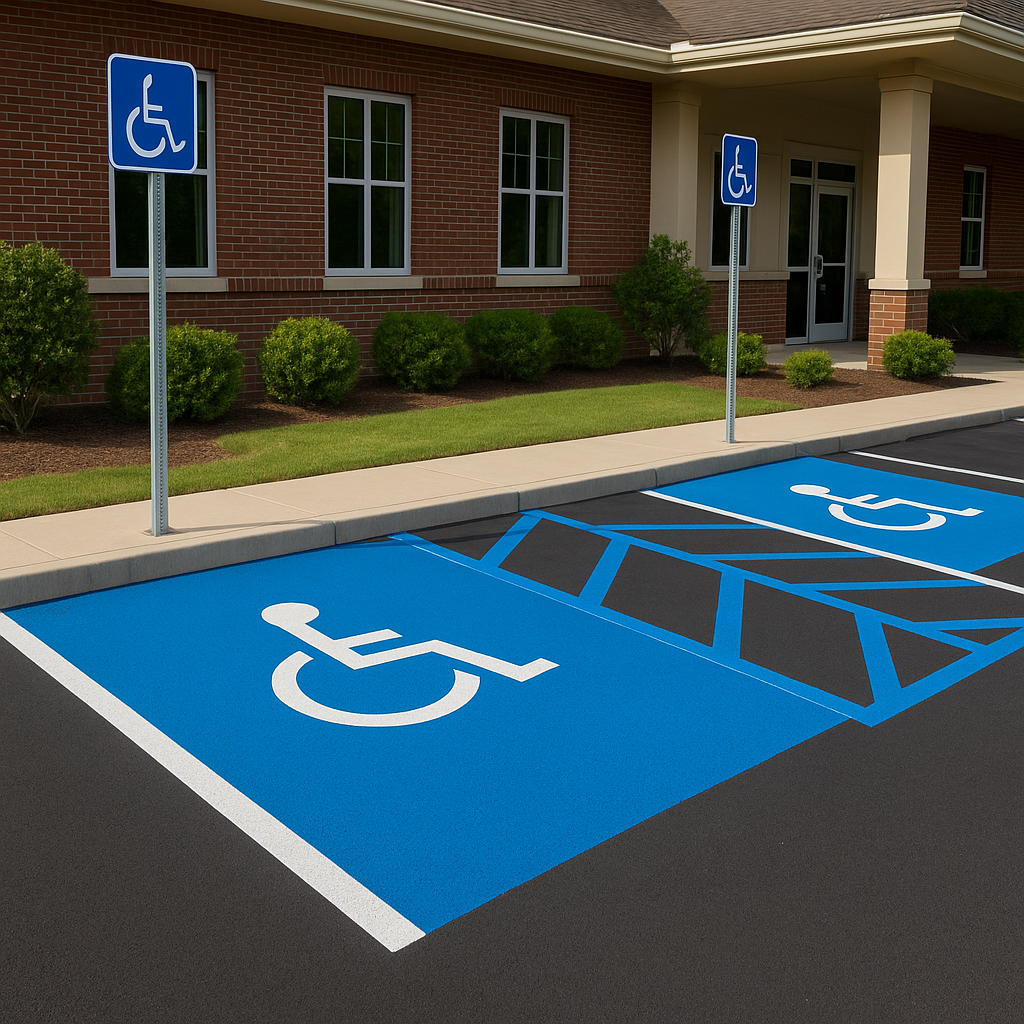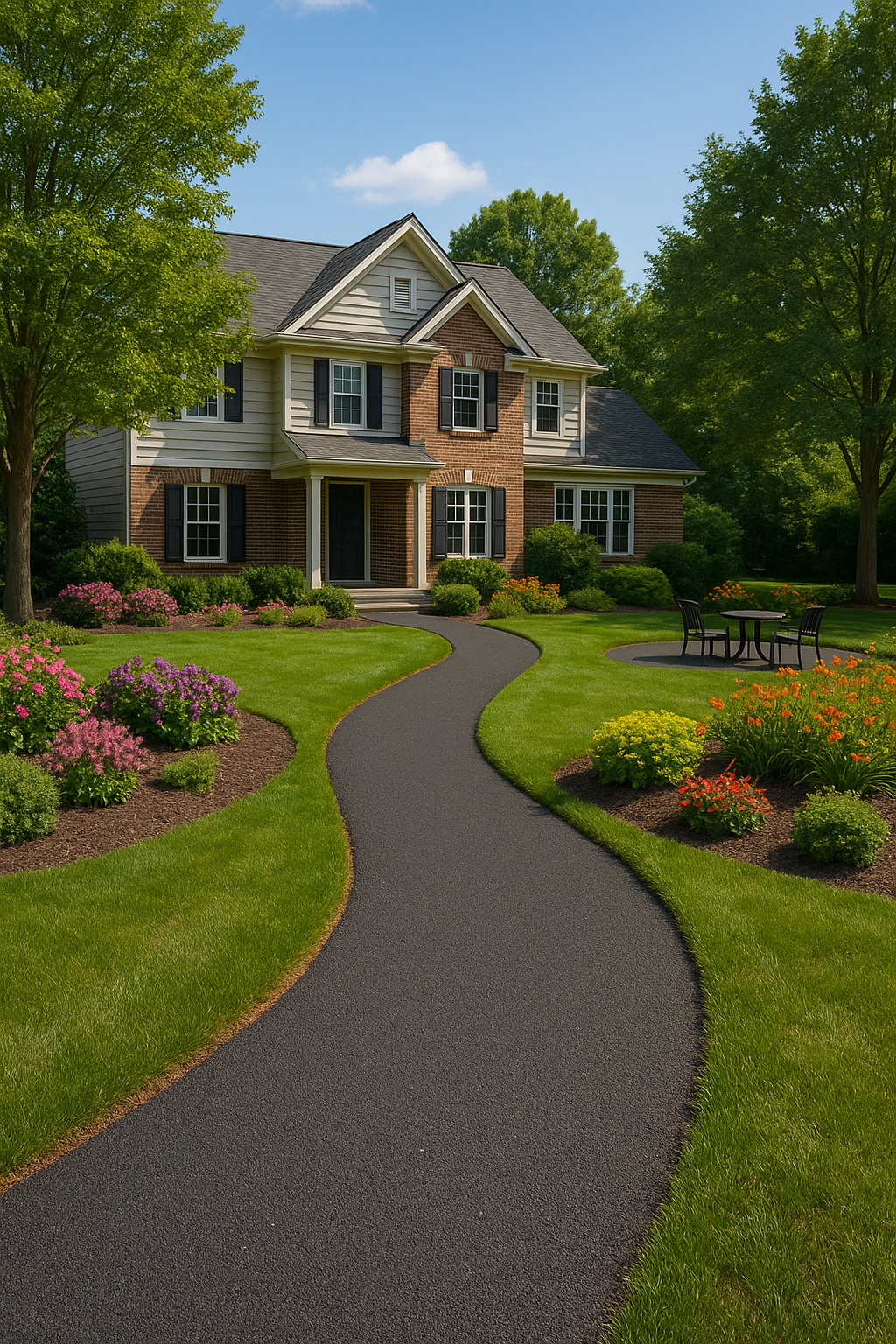The Complete Guide to Sealcoating: Why Every 2-3 Years Matters
If you want your asphalt driveway or parking lot to last 20+ years instead of needing replacement at 10, there's one simple maintenance task that makes all the difference: sealcoating.
Yet it's one of the most overlooked aspects of asphalt care. At J&J Asphalt, we've seen countless driveways deteriorate prematurely simply because homeowners didn't understand the importance of this affordable preventive measure.
Let's break down everything you need to know about sealcoating—what it is, why it matters, and why that 2-3 year timeline isn't just a suggestion.
What is Sealcoating?
Sealcoating is a protective layer applied to asphalt surfaces that acts like sunscreen for your driveway. It's a liquid mixture—typically made from refined coal tar or asphalt emulsion—that's applied as a coating over your existing pavement.
Think of it this way: asphalt is made from aggregates (rocks and sand) held together by a petroleum-based binder. Over time, this binder oxidizes and breaks down from exposure to sun, water, chemicals, and traffic. Sealcoating adds a protective barrier that slows this deterioration dramatically.
Why Sealcoating Matters: The Science
Your asphalt faces relentless attacks from multiple directions:
Sun and UV Damage
Just like UV rays age your skin, they break down the petroleum binders in asphalt. This process, called oxidation, makes your asphalt brittle, gray, and prone to cracking. Sealcoating blocks up to 97% of UV rays.
Water Infiltration
Water is asphalt's worst enemy. When it seeps into small cracks and pores, it weakens the base below. In Tennessee, our freeze-thaw cycles make this worse—water freezes, expands, and creates bigger cracks. Sealcoating fills surface voids and prevents water penetration.
Chemical Damage
Motor oil, gasoline, antifreeze, and other automotive fluids literally dissolve asphalt binder. Sealcoating creates a barrier that resists these chemicals, preventing the soft spots and deterioration they cause.
Traffic Wear
Vehicle weight and tire friction gradually wear down asphalt. While sealcoating can't eliminate wear, it does reduce the rate of surface deterioration and makes your asphalt more resistant to abrasion.
The Magic of the 2-3 Year Timeline
You might wonder: why every 2-3 years specifically? Why not longer—or more frequently?
Year 1: Maximum Protection
Freshly applied sealcoating provides peak protection. Your driveway looks great, water beads off the surface, and the UV barrier is at full strength.
Year 2-3: Protection Remains Strong
The sealcoat continues working effectively, though it begins to show minor wear in high-traffic areas. Protection is still excellent, but starting to diminish.
Year 3-4: The Critical Window
By year three, protection has degraded significantly in high-traffic zones. UV exposure has broken down the sealcoat surface. This is why we recommend reapplication before you hit year four.
Beyond Year 4: Declining Returns
Wait too long, and you're back to exposed asphalt dealing with the same deterioration you were trying to prevent. The damage done during this unprotected period is permanent.
The Bottom Line: Sealcoating every 2-3 years means your asphalt is protected 100% of the time. Wait 5-6 years between applications, and you're leaving your surface vulnerable during the later years.
The Value Proposition
Here's what matters to Middle Tennessee property owners:
Regular sealcoating can extend your asphalt's lifespan from 12-15 years to 20-25+ years. That means delaying or avoiding an expensive replacement—one of the biggest returns on investment for any home maintenance task.
Plus, consider what you're preventing:
- Crack filling repairs (stopped by sealcoating)
- Pothole patching (prevented by keeping water out)
- Early resurfacing (delayed by 5-10 years)
- Complete replacement (postponed significantly)
The small investment in preventive maintenance saves substantially compared to reactive repairs and premature replacement.
What Sealcoating Does (And Doesn't Do)
What Sealcoating DOES:
- Blocks UV rays that cause oxidation and brittleness
- Prevents water infiltration into small cracks and pores
- Resists chemical damage from oil, gas, and other fluids
- Slows surface wear from traffic and weather
- Enhances appearance with a rich, dark black finish
- Makes cleaning easier with a smooth, non-porous surface
- Increases property value with improved curb appeal
- Extends pavement life by 5-10 years or more
What Sealcoating DOESN'T Do:
- Repair existing damage - cracks must be filled first
- Fix structural problems - base issues require other solutions
- Fill large cracks or potholes - these need separate repair
- Work on brand-new asphalt - new asphalt needs 6-12 months to cure first
- Last forever - it wears down and needs reapplication
When to Sealcoat: Timing Matters
Perfect Timing for New Driveways
Wait 6-12 months after installation before first sealcoating. New asphalt needs time to cure and harden. Sealcoating too early can trap oils and prevent proper curing.
Best Time of Year in Tennessee
Spring through Early Fall (April-October) is ideal. You need:
- Temperatures above 50°F during application and for 24-48 hours after
- No rain for 24-48 hours after application
- Low humidity for proper curing
Avoid: Late fall through early spring when temperatures drop and rain is frequent.
Signs It's Time to Reseal
- It's been 2-3 years since your last application
- The surface has faded from rich black to gray
- Water no longer beads up on the surface
- Small cracks are starting to appear
- High-traffic areas show increased wear
The J&J Asphalt Sealcoating Process
When you choose J&J Asphalt for sealcoating, here's what sets our process apart:
1. Thorough Preparation
We start by cleaning the entire surface using power washing or sweeping to remove all dirt, debris, vegetation, and loose material. Sealcoat only works when it bonds properly to clean asphalt.
2. Crack Repair First
All cracks are properly filled and sealed before sealcoating begins. Remember: sealcoating protects against new damage but doesn't repair existing issues.
3. Edge Treatment
We carefully edge along grass, concrete, and other borders to ensure clean lines and prevent sealcoat from spreading where it shouldn't.
4. Professional Application
We apply sealcoat using commercial-grade equipment—typically two thin coats rather than one thick coat for better coverage, adhesion, and longevity.
5. Proper Curing Time
We give clear instructions about when you can walk or drive on the surface. Rushing this step ruins the application.
6. Traffic Management
For commercial lots, we work in sections so your business can stay operational, coordinating with you to minimize disruption.
Sealcoating Myths Debunked
Myth 1: "It's just cosmetic"
Reality: While sealcoating does look great, the protective benefits are the real value. The black appearance is a bonus.
Myth 2: "I can skip it and just fix cracks as they appear"
Reality: By the time cracks appear, water has already been working beneath the surface. Prevention is far cheaper than repair.
Myth 3: "More coats means better protection"
Reality: Two properly applied coats provide optimal protection. Excessive layers can actually cause problems like cracking and peeling.
Myth 4: "All sealcoating products are the same"
Reality: Commercial-grade sealers used by professionals contain more solids and additives than retail products, providing superior protection and longevity.
Myth 5: "I can wait 5 years between applications"
Reality: By year five, you've already accumulated 2-3 years of unprotected deterioration. That damage is permanent.
DIY vs. Professional Sealcoating
We're honest about this: sealcoating can be a DIY project for handy homeowners. But here's what you need to know:
DIY Challenges:
- Proper surface preparation is labor-intensive
- Retail sealcoat products have fewer protective additives
- Application techniques affect longevity significantly
- Equipment rental and product costs add up
- Physical demands are substantial
- Results vary widely based on experience
Professional Advantages:
- Commercial-grade materials with superior protection
- Proper equipment for even, thorough application
- Experience with edge work and detail
- Faster completion with better results
- Guaranteed workmanship
- Combined crack repair and sealcoating service
Consider whether the DIY effort and uncertainty justify the difference versus hiring professionals with the right materials and experience.
Special Considerations for Commercial Properties
Business owners: your parking lot represents a significant investment. Regular sealcoating is even more critical because:
- Higher traffic volume accelerates wear
- First impressions matter for customers and clients
- Liability concerns make proactive maintenance essential
- Larger surfaces mean replacement costs are exponentially higher
- Professional appearance reflects on your business quality
For commercial properties, we recommend:
- Sealcoating every 2 years (versus 2-3 for residential)
- More frequent inspections for high-traffic areas
- Strategic timing to minimize business disruption
- Professional striping after sealcoating to restore parking lines
Maintaining Your Investment Between Sealcoats
Maximize your sealcoating investment with these simple practices:
Clean regularly - Remove debris, leaves, and dirt that trap moisture
Address spills quickly - Clean oil and chemical spills promptly to prevent penetration
Avoid sharp objects - Be careful with snowplow blades, sharp turns on bikes, and metal tools
Watch for standing water - Address drainage issues before they cause problems
Fill small cracks promptly - Don't wait until your next sealcoating
Avoid heavy loads in extreme heat - Very hot days soften asphalt; heavy vehicles or kickstands can cause impressions
The Long Game: 20 Years vs. 10 Years
Let's compare two identical driveways over their lifespan:
Driveway A - Regular Sealcoating Every 2-3 Years:
- Initial installation
- Consistent sealcoating maintenance throughout life
- Minor touch-ups as needed
- At 20 years: Excellent condition, good for another 5-10 years
- Total replacements needed: 0
Driveway B - No Sealcoating:
- Initial installation
- Deterioration begins accelerating after year 5
- Significant crack repairs needed
- Complete replacement required around year 10-12
- Second replacement needed around year 20-24
- At 20 years: Fair condition, nearing second replacement
- Total replacements needed: 1-2
The difference is clear: regular sealcoating dramatically extends pavement life and avoids the major expense of replacement.
Ready to Protect Your Investment?
Sealcoating isn't glamorous, but it's one of the smartest investments you can make in your property. Every 2-3 years, with a modest investment, you're protecting a valuable asset and avoiding costly repairs down the road.
At J&J Asphalt, we've been protecting Middle Tennessee driveways and parking lots for over 30 years. We use commercial-grade materials, professional equipment, and proven techniques that deliver results lasting the full 2-3 years.
Contact us today for a free sealcoating quote. Serving Nashville, Columbia, Murfreesboro, Clarksville, Pulaski, and all of Middle Tennessee, we're your local partner for long-lasting asphalt protection.
Pro Tip: Create a simple reminder on your phone for every 2-3 years after your sealcoating application. When that reminder goes off, give us a call. Staying on schedule is the key to maximum pavement life.



